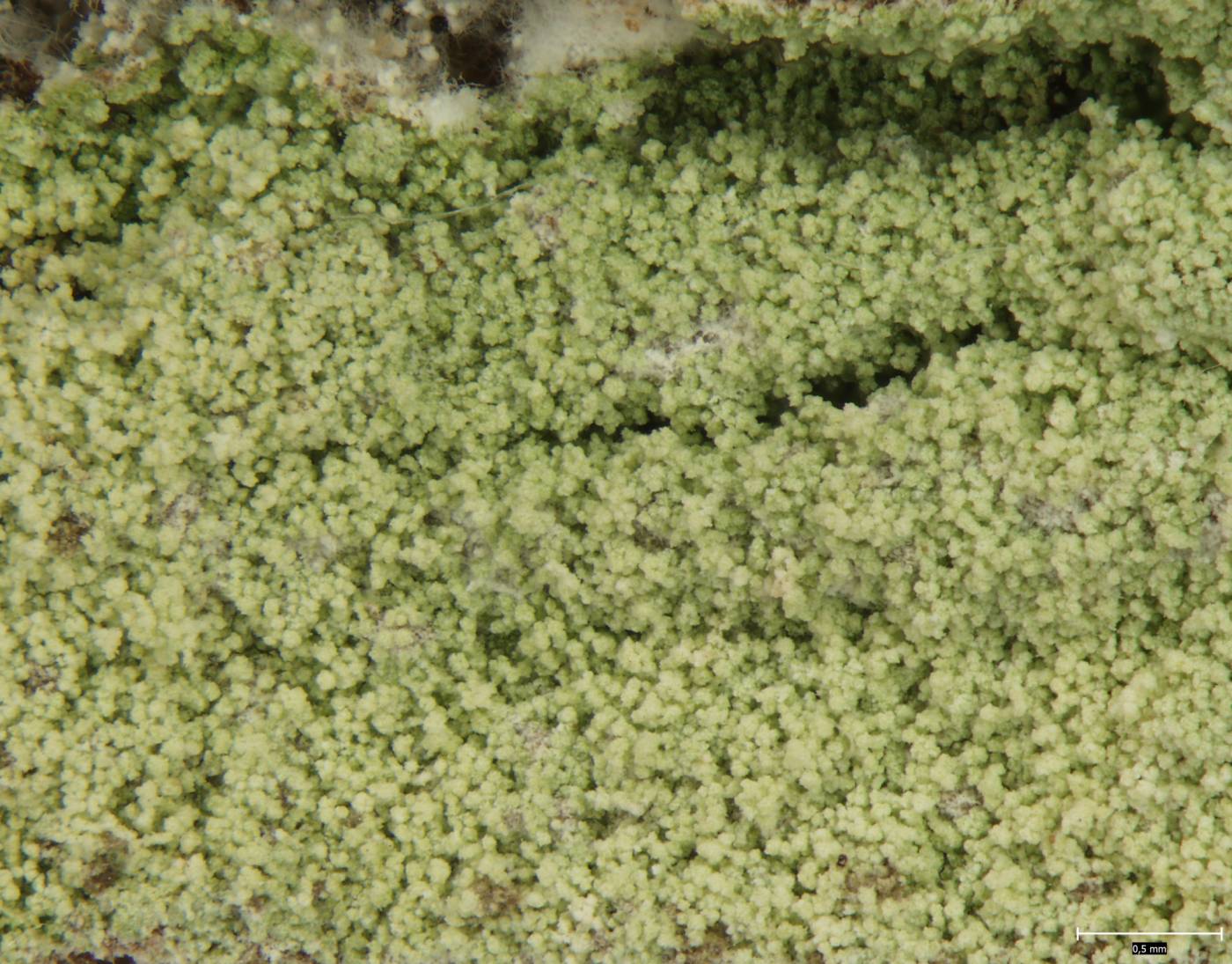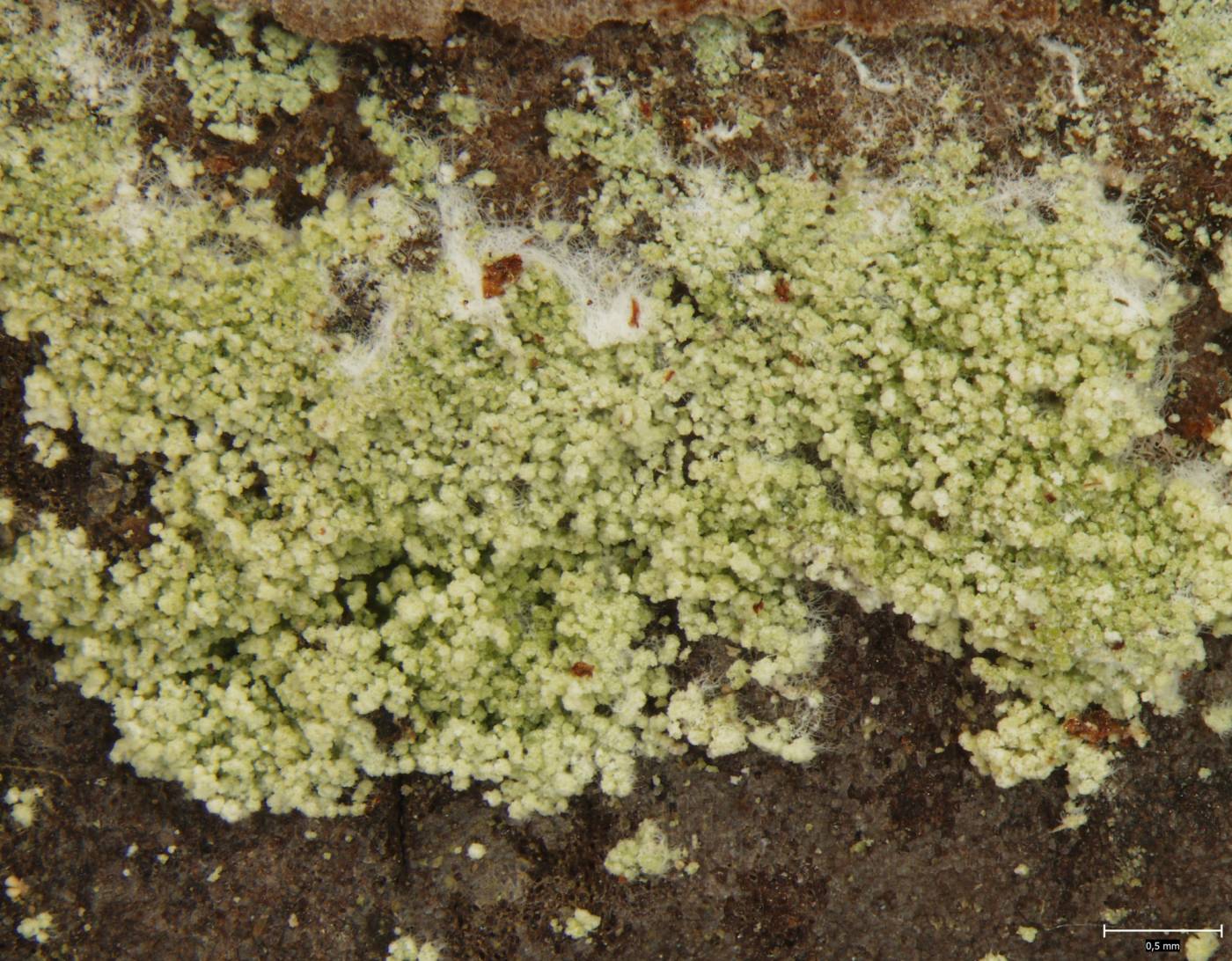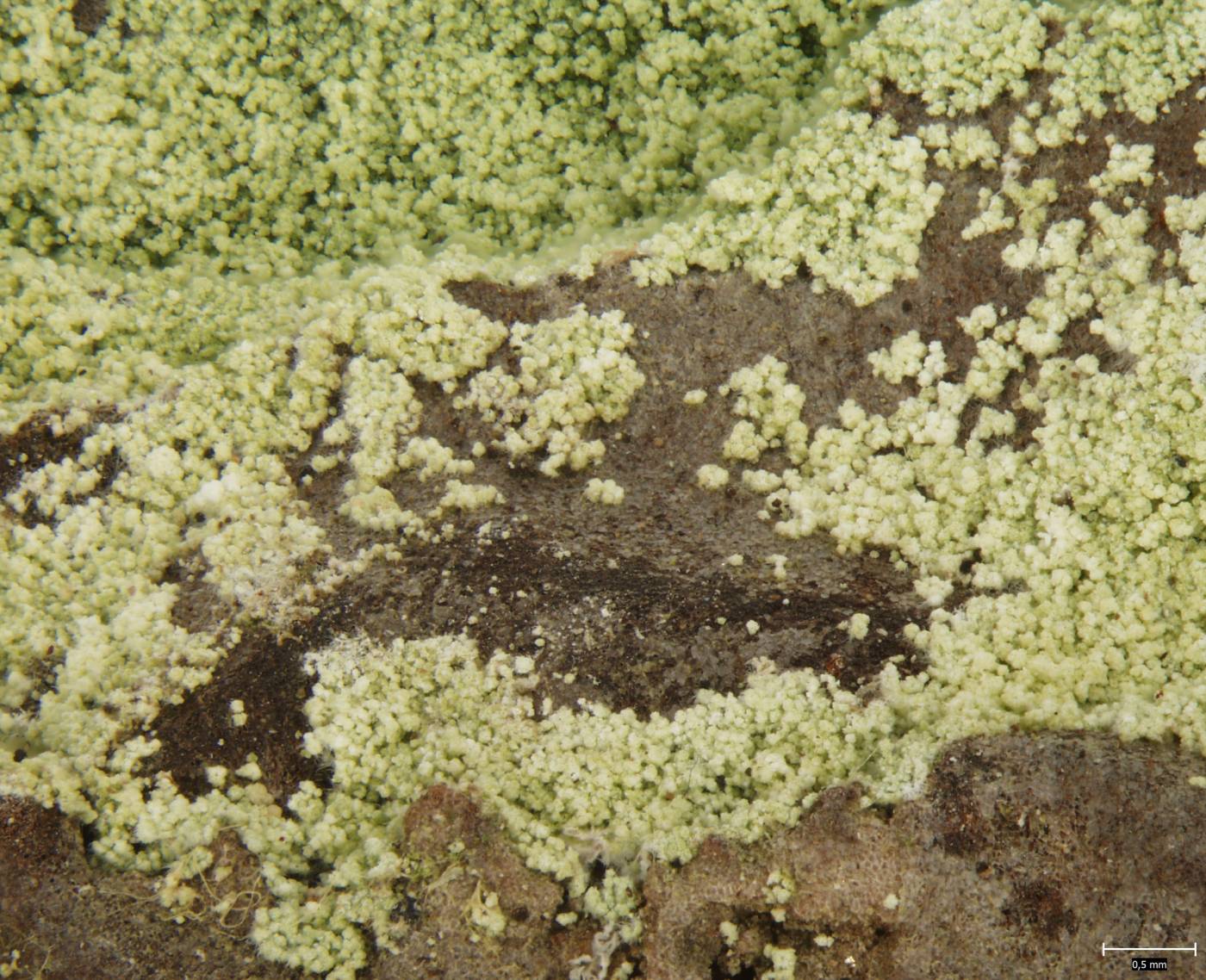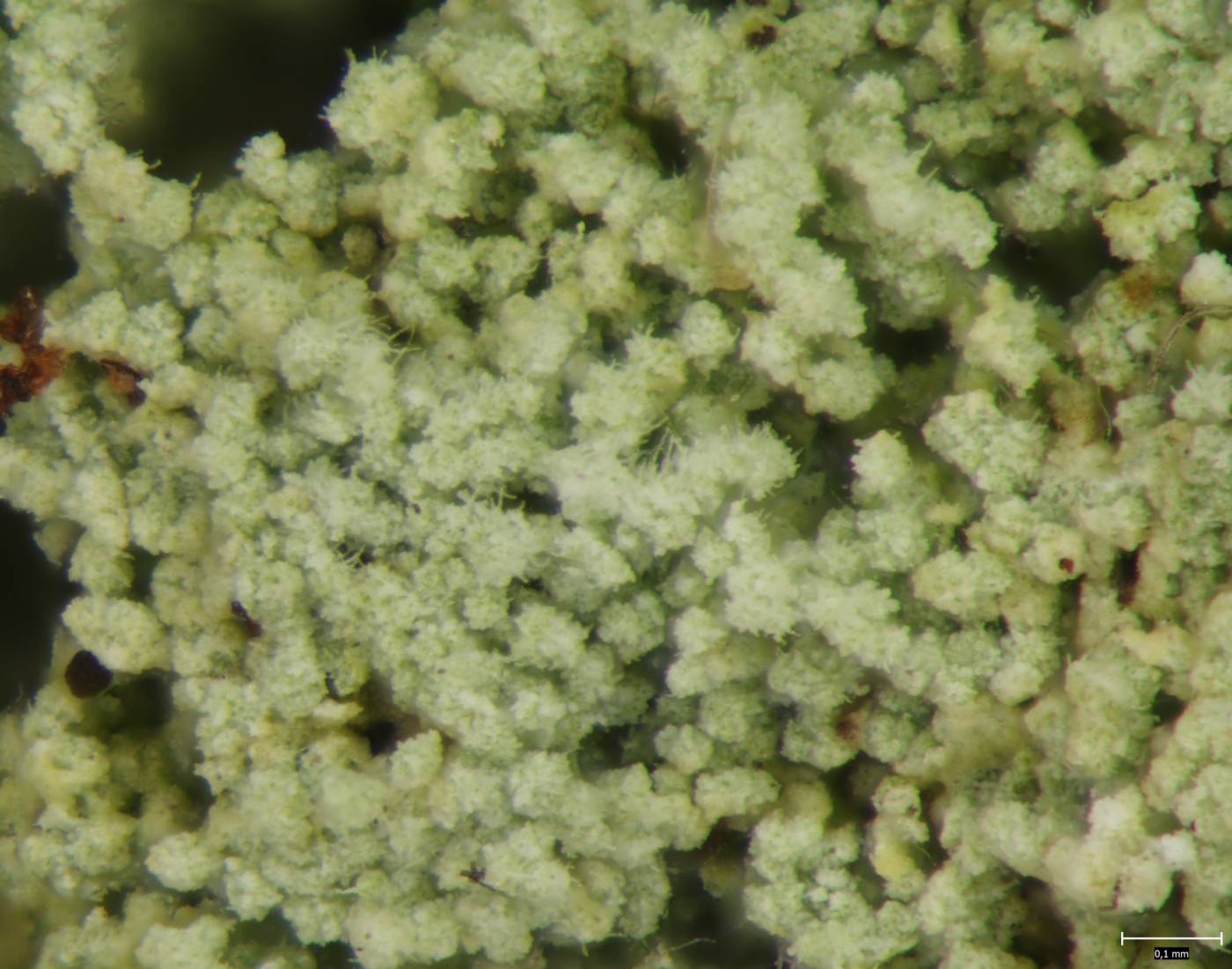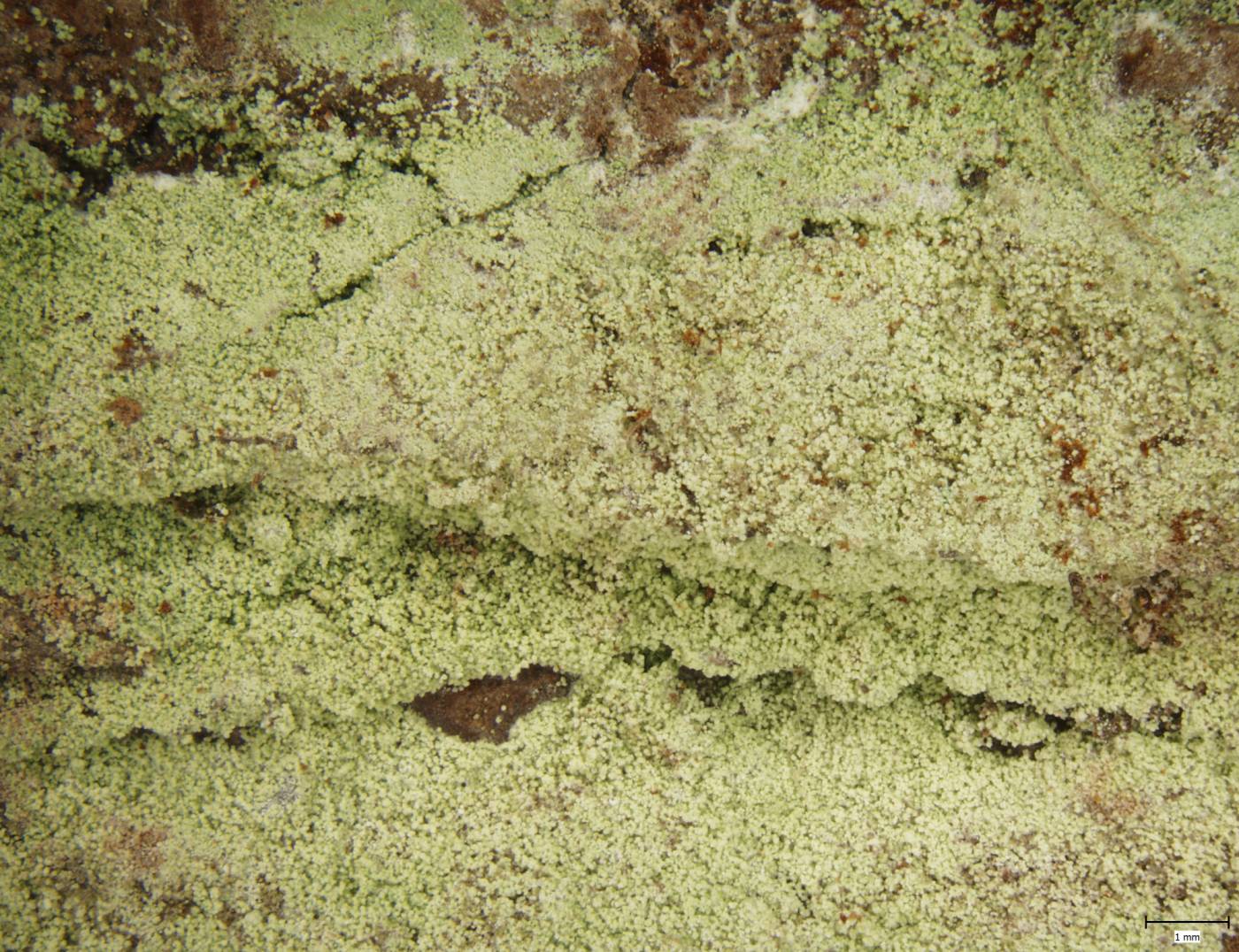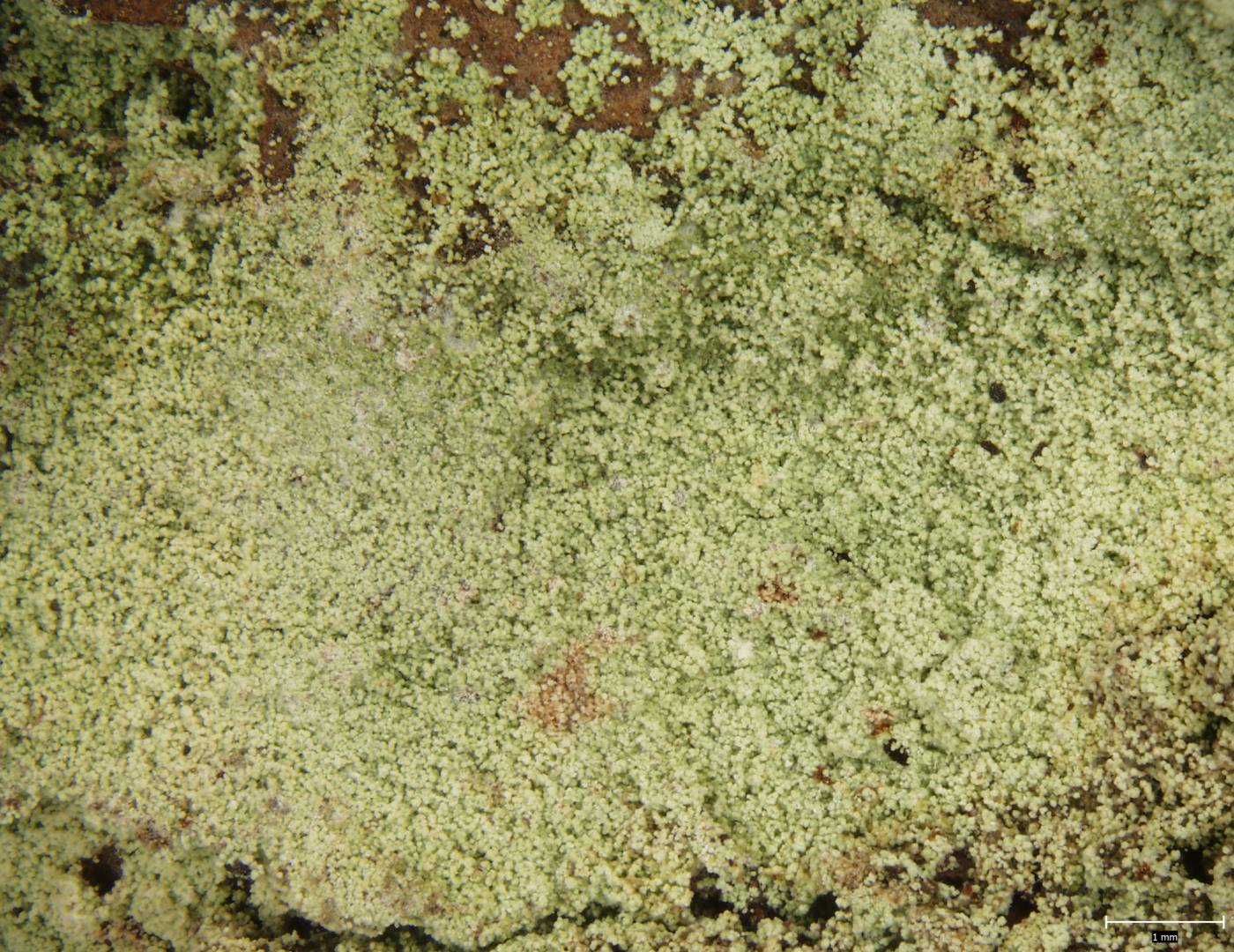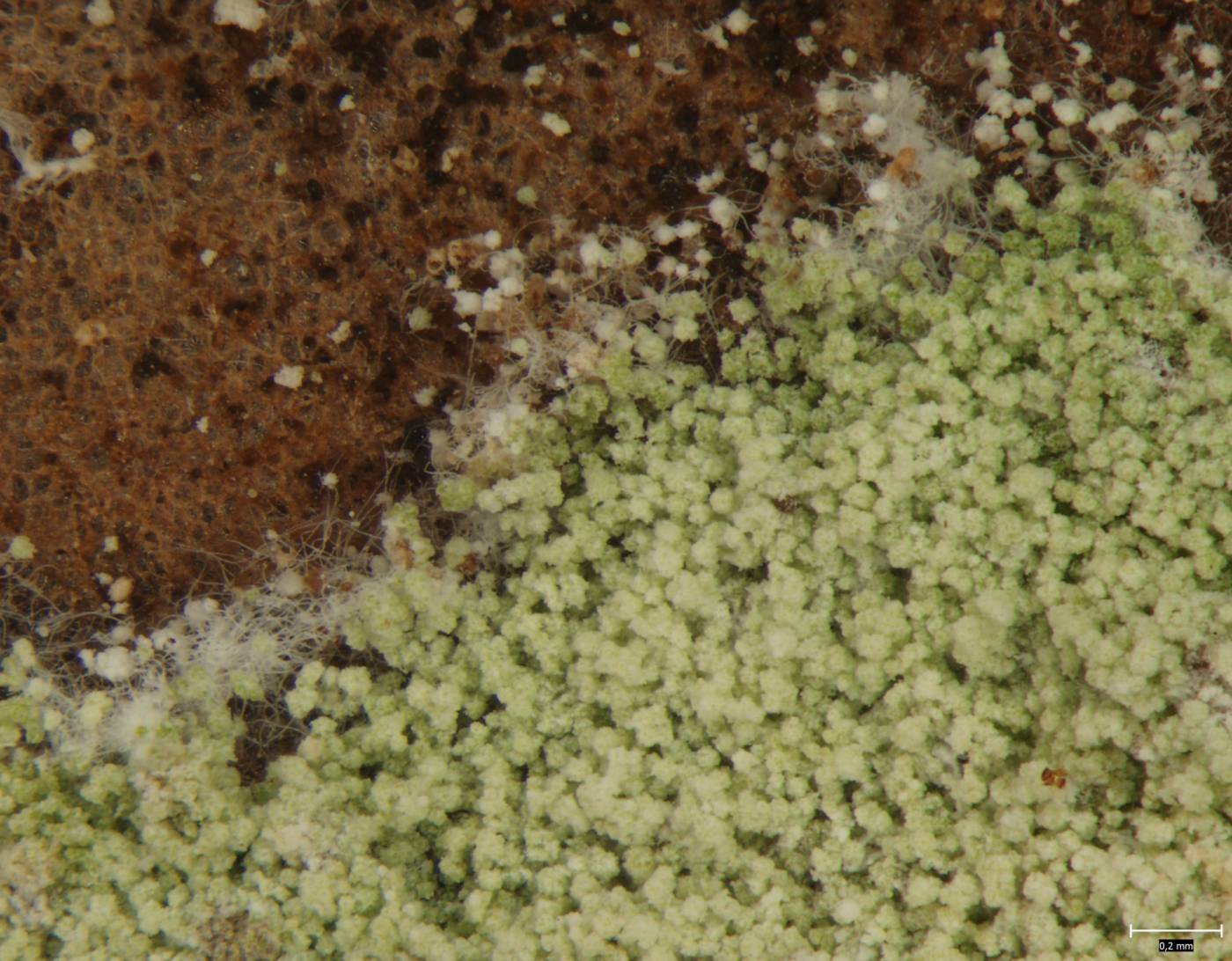An acidophilous Lepraria species that may be identified in the field by the finely sorediate, greenish (to almost white in more exposed habitats) thallus and by characteristic ecology. However, checking of secondary metabolites is recommended for its safe identification. Typically, the lichen is found on acidic tree bark in various forest types and in raised bog ecosystems, where it may grow even on exposed peat. Besides, the species commonly occurs on wood of stumps, snags, less often also on rocks. It is one of the most abundant genus members, widespread and common at any elevation, both in the Czech Republic and Europe.
The species * L. toensbergiana*, described from central Europe in 2005, is considered a chemotype of L. jackii, although it produces a different fatty acid.
Literature: Bayerová Š. & Kukwa M. (2005): A New Species of Lepraria (Lichenized Ascomycetes) from Europe. – Bryologist 108: 131–138. Slavíková-Bayerová Š. (2006): New and interesting records of Lepraria (Stereocaulaceae, Ascomycota) from the Czech Republic. – In: Lackovičová A., Guttová A., Lisická E. & Lizoň P. [eds], Central European lichens – diversity and threat, p. 97–107, Mycotaxon Ltd., Ithaca.
taxonomic classification:Ascomycota → Lecanoromycetes → Lecanorales → Stereocaulaceae → Lepraria
most frequented synonyms:Lepraria toensbergianaRed List (Liška & Palice 2010):LC – least concern
Occurrence in the Czech Republic
All records: 961, confirmed 952. One click on a selected square displays particular record(s), including their source(s).
